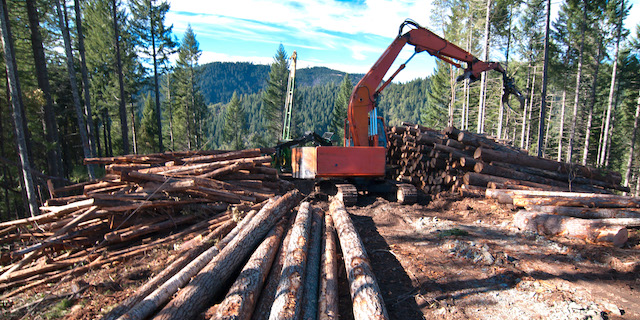Oregon state forest logging targets proposed to improve certainty
Published 9:06 am Friday, March 7, 2025

- A bill under consideration in the Oregon Legislature would require the Oregon Department of Forestry to set annual targets for logging in state forests. (Courtesy Oregon Department of Forestry)_
SALEM — Annual logging targets would be established for Oregon’s state forests under a bill meant to provide more certainty for timber companies and county governments.
However, opponents of House Bill 3103 argue the proposal would constrain the authority of state forestry officials and undermine environmental protections.
The bill’s supporters counter that state and federal regulations would be factored into the “sustainable timber harvest level” calculated by the Oregon Department of Forestry.
“Nothing in this bill would impact the department’s ability to manage the forest,” said Branden Pursinger, executive director of the Council of Forest Trust Land Counties, which represents local governments that share in state logging revenues.
Under the latest version of HB 3103, the ODF would estimate the volume of planned timber harvest from state forests at least once a decade, separated into annual increments.
If the actual amount of logging falls below those targets, the ODF would have to make up that volume later, unless the shortfall is due to wildfires, diseases or winter storms.
The bill would also allow lawsuits seeking to compel the agency to establish logging targets and abide by harvest volumes if it doesn’t comply with those requirements.
In the 1940s, 15 counties foreclosed on forest lands from owners who failed to pay property tax, then turned those tracts over to the state government in return for a portion of the timber revenues.
Proponents claim that HB 3103 will help avoid unexpected logging shortfalls from those state forests, which have “blown a hole in budgets” for county governments in the past.
“It provides a level of certainty to what has become a very fluctuating process over the years,” Pursinger said during a recent legislative hearing.
The bill is likewise meant to improve predictability for sawmills who rely on state forests for timber, as the ODF “frequently over-promises and under-delivers,” according to the bill’s supporters.
“Those of us whose businesses and budgets depend on state forests have been asking ODF for years to explain how this keeps happening. It’s been tough to get a straight answer,” said Dave Kunert, vice president of resources for Hampton Lumber.
Rep. Mark Owens, R-Crane, said the most recently amended version of his bill responds to the criticisms laid out by environmental groups.
“I think we worked through a majority of those issues,” he said.
During a recent legislative hearing, though, several environmental nonprofits testified that they continue to have reservations about the revised proposal.
“It would require a harvest rule that we’re concerned would supersede other plans, policies and directives,” said Michael Lang, senior policy manager for the Wild Salmon Center, who noted that his group’s suggested changes to HB 3103 weren’t included in the amended version.
Though the ODF may have fallen short of projected harvest volumes in the past, in recent years the agency has been “on the mark” and revenues have actually exceeded estimates, Lang said.
The proposal would reverse the process by which Oregon’s state forests have become net “carbon sinks” that absorb and store greenhouse gas emissions, said Rand Schenck, forestry and natural lands lead for Mobilizing Climate Action Together, a volunteer group.
“HB 3103 would recreate the conditions that our federal forests experienced 40 to 50 years ago, when timber production was the highest priority,” Schenck said.
The Oregon Wild nonprofit believes the bill contains “deeply problematic” provisions that would undermine the pending “habitat conservation plan” for threatened and endangered species in state forests, said Casey Kulla, the group’s state forest policy coordinator.
“If that language was removed, the bill would be redundant with current planning and management efforts,” Kulla said.






